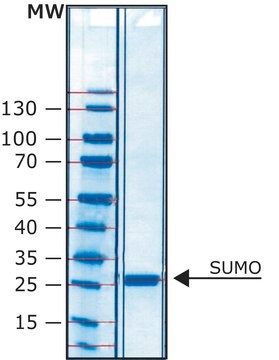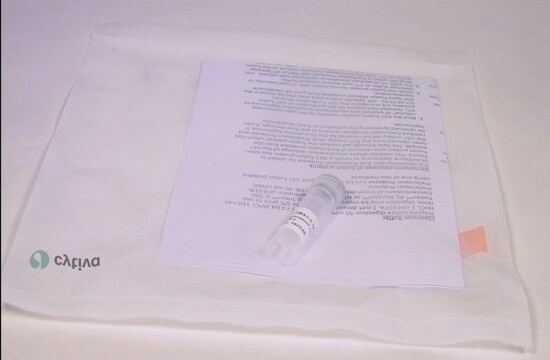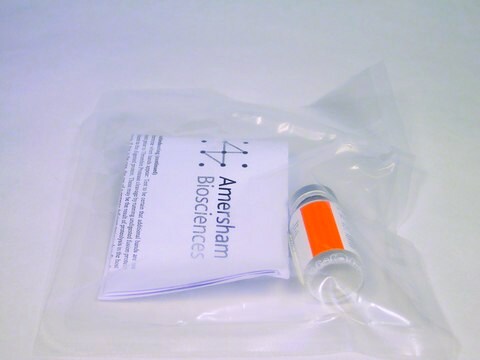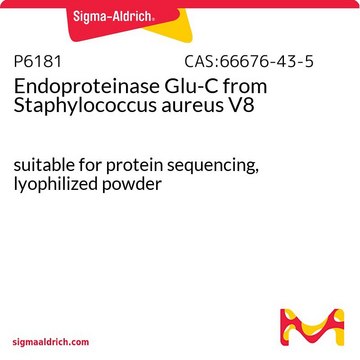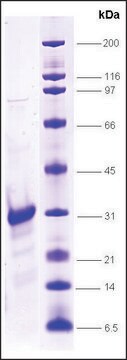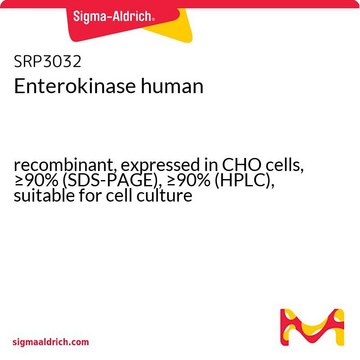SAE0045
HRV-3C Protease.
N-Terminal His tagged recombinant protein, aqueous solution, 0.8-1.2 mg/mL
Sinônimo(s):
Human Rhinovirus 3C Protease, Levlfqgp site protease, PreScission Protease
About This Item
Produtos recomendados
fonte biológica
human (human Rhinovirus Type 14)
Nível de qualidade
Ensaio
≥90% (SDS-PAGE)
forma
aqueous solution
atividade específica
≥5000 U/mg
peso molecular
21 kDa
concentração
0.8-1.2 mg/mL
técnica(s)
protein purification: suitable
adequação
suitable for protein modification
aplicação(ões)
life science and biopharma
Condições de expedição
dry ice
temperatura de armazenamento
−20°C
Descrição geral
Proteolytic cleavage occurs between the Gln and Gly residues.
HRV-3C protease is a useful tool to cleave recombinant proteins that are expressed as a fusion protein with this sequence, between the carrier domain and the protein of interest.
This recombinant version contains a six-histidine tag and can be easily removed by IMAC chromatography.
Aplicação
Definição da unidade
forma física
Código de classe de armazenamento
10 - Combustible liquids
Classe de risco de água (WGK)
WGK 2
Certificados de análise (COA)
Busque Certificados de análise (COA) digitando o Número do Lote do produto. Os números de lote e remessa podem ser encontrados no rótulo de um produto após a palavra “Lot” ou “Batch”.
Já possui este produto?
Encontre a documentação dos produtos que você adquiriu recentemente na biblioteca de documentos.
Os clientes também visualizaram
Nossa equipe de cientistas tem experiência em todas as áreas de pesquisa, incluindo Life Sciences, ciência de materiais, síntese química, cromatografia, química analítica e muitas outras.
Entre em contato com a assistência técnica